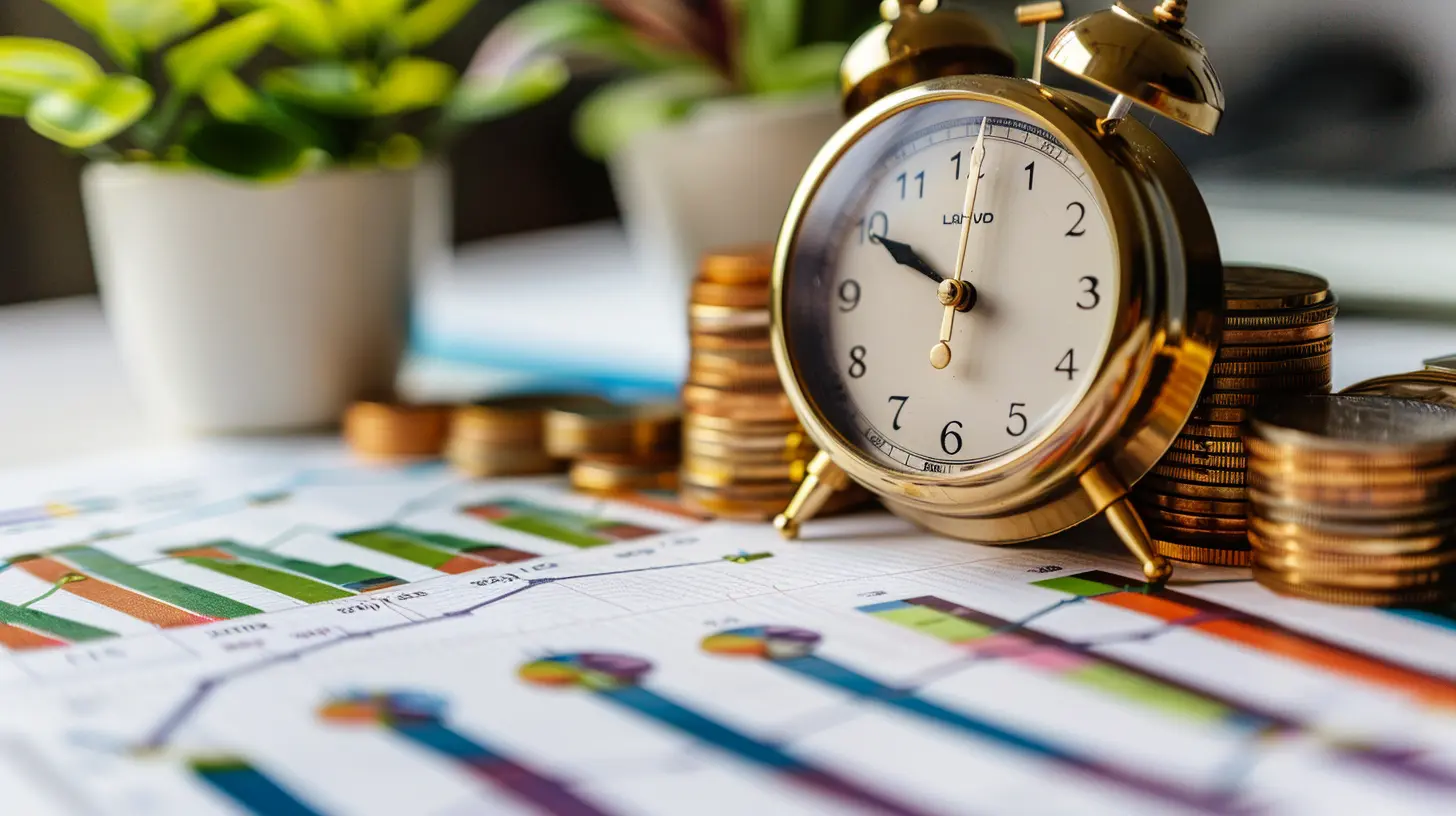Profiting from Capital Gains: The Importance of Timing
4 November 2025
Investing can feel like a rollercoaster ride—thrilling one moment and terrifying the next. Whether you're trading stocks, real estate, or cryptocurrency, one of the most critical factors in maximizing your profits is timing. When you buy and, more importantly, when you sell can make a significant difference in how much you walk away with.
But timing the market is easier said than done, right? While no one has a crystal ball, understanding the importance of capital gains and how timing affects them can put you in a much better position to grow your wealth. Let’s break it down in a way that’s easy to digest.
What Are Capital Gains?
Before we dive into timing, let’s start with the basics: what exactly are capital gains?Capital gains are the profits you make when you sell an asset for more than what you paid for it. This asset could be stocks, bonds, real estate, or even cryptocurrency. For example, if you bought a stock for $50 and later sold it for $100, you made a capital gain of $50.
But here’s where things get interesting—capital gains aren’t just about profit; they also come with tax implications. This is where timing plays a huge role.
Short-Term vs. Long-Term Capital Gains
Not all capital gains are treated equally. In the eyes of the taxman, how long you hold onto an asset before selling it determines how much tax you owe. Let’s break it down:1. Short-Term Capital Gains
- If you sell an asset within one year of purchasing it, any profits are considered short-term capital gains.- These gains are typically taxed at your regular income tax rate, which could be significantly higher depending on your tax bracket.
- Translation? If you sell too soon, a large chunk of your profits could end up in the government’s pocket.
2. Long-Term Capital Gains
- If you hold onto an asset for over a year before selling, your profits are considered long-term capital gains.- These gains are taxed at a lower rate, usually 0%, 15%, or 20% depending on your income level.
- In short, patience often pays off when it comes to capital gains.
Understanding the difference between short-term and long-term capital gains is crucial because it could mean the difference between keeping more of your money or handing a big portion over to the IRS.
The Role of Timing in Maximizing Capital Gains
Now that we know the basics, let’s talk about why timing is everything when it comes to capital gains.1. Holding Periods Matter
As we discussed, short-term gains are taxed much higher than long-term gains. Holding onto an asset for just a little longer could mean paying significantly less in taxes. If you’re nearing the one-year mark, you might want to consider waiting before selling.2. Market Cycles and Emotional Investing
Markets go through cycles—booms, busts, and everything in between. Many investors sell out of fear when prices drop, only to regret it later when the market rebounds. The key? Avoid emotional investing. Instead of reacting impulsively, take a step back and analyze whether selling now aligns with your long-term goals.3. Buy Low, Sell High (But When?)
We’ve all heard the saying, "Buy low, sell high." But determining when an asset has reached its peak or bottom is incredibly challenging. While you won’t always time the market perfectly, following trends, watching market indicators, and staying informed can help you make better decisions.4. Year-End Tax Planning
The end of the year is a great time to evaluate your investments. If you have significant capital gains, you might consider selling losing investments to offset those gains—a strategy known as tax-loss harvesting. This way, you can minimize your tax bill while still making smart investment decisions.5. The Power of Compounding
When you hold onto investments over the long term, you’re not just benefiting from lower tax rates—you’re also allowing your gains to compound. This means your money grows on top of itself exponentially. Think of it like a snowball rolling downhill. The longer it rolls, the bigger it gets.
Common Mistakes Investors Make with Timing
Timing the market is tricky, and even the most experienced investors make mistakes. Here are some common pitfalls to avoid:1. Panic Selling
Many investors sell in a panic when the market drops, fearing further losses. However, history has shown that markets tend to recover. Selling in a downturn often locks in losses rather than preventing them.2. Buying at the Peak
People love jumping on bandwagons. When a stock or asset is skyrocketing, FOMO (Fear of Missing Out) kicks in. But by the time the average investor buys in, the price may already be at its peak, leading to poor returns or losses.3. Ignoring Tax Implications
Selling without considering tax consequences can eat into your profits. Always factor in how your gains will be taxed before making a move.4. Trading Too Often
Frequent buying and selling might seem exciting, but it often leads to higher transaction costs, increased taxes, and emotional decisions that could hurt your returns.How to Improve Your Timing Strategy
Now that we know what not to do, let’s talk about how to get better at timing your investments.1. Follow a Long-Term Strategy
Instead of trying to make quick profits, consider a long-term approach. Holding assets for years instead of months or days generally leads to better tax treatment and increased compounding benefits.2. Use Dollar-Cost Averaging
Trying to guess the perfect time to buy is nearly impossible. Instead, use dollar-cost averaging—investing a fixed amount at regular intervals. This strategy reduces the impact of short-term fluctuations and ensures you’re steadily building wealth.3. Stay Informed but Don’t Obsess
Keeping up with financial news and market trends is important, but don’t let the daily noise dictate your decisions. Emotional reactions often lead to poor financial choices.4. Work with a Financial Advisor
If navigating capital gains and market timing feels overwhelming, consider seeking advice from a financial advisor. They can provide valuable insights tailored to your unique situation.Final Thoughts
Timing isn’t just a buzzword—it’s a key factor in how much you profit from capital gains. While no one can perfectly time the market, understanding the impact of holding periods, tax implications, and market cycles can help you make smarter, more profitable decisions.The goal isn’t to chase quick wins but to build lasting wealth. By being patient, strategic, and informed, you can maximize your capital gains and keep more of your hard-earned money. After all, investing isn’t a sprint—it’s a marathon.
So, the next time you’re tempted to sell, take a step back and ask yourself: Is this the right time, or am I just reacting to short-term noise? Your future self will thank you.
all images in this post were generated using AI tools
Category:
Capital GainsAuthor:

Knight Barrett

